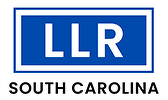
South Carolina Department of Labor Licensing and Regulation
The mission of the South Carolina Department of Labor, Licensing and Regulation (LLR) is to promote the health, safety and economic well-being of the public.
Click to Learn More About the South Carolina Department of Labor, Licensing and Regulation (LLR)
Visit "https://redirect.aecdaily.com/s18122/llr.sc.gov and Join Now!